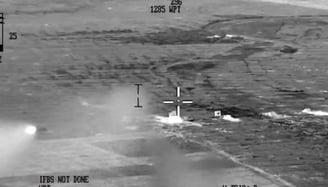

By Special Correspondent
Published: May 7, 2025
New Delhi/Islamabad – In a significant escalation of tensions between India and Pakistan, the Indian Armed Forces launched 'Operation Sindoor' on May 6, 2025, conducting strikes on multiple targets in Pakistan and Pakistan occupied Jammu and Kashmir (PoJK). The operation was launched in retaliation for the April 22 terrorist attack in Pahalgam, Jammu and Kashmir, which resulted in the deaths of 26 tourists, including a foreign national.
Background: The Pahalgam Attack
On April 22, 2025, terrorists attacked tourists in Baisaran Valley near Pahalgam, killing 26 individuals, including 25 tourists and a local Muslim pony operator. The Resistance Front (TRF), believed to be an offshoot of Pakistan-based Lashkar-e-Taiba, initially claimed responsibility for the attack but later retracted its statement. Investigations revealed that the attackers, armed with M4 carbines and AK-47s, specifically targeted non-Muslim tourists. India's National Investigation Agency (NIA) has taken over the investigation, identifying both foreign and local terrorists involved in the attack.
Operation Sindoor: The Strikes
In response to the Pahalgam attack, India launched Operation Sindoor, targeting what it described as terrorist infrastructure linked to groups like Lashkar-e-Taiba and Jaish-e-Mohammed. The Indian Armed Forces conducted airstrikes on nine locations in Pakistan and Pakistan occupied Jammu and Kashmir. According to ground reports, the strikes resulted in at least 66 deaths and 46 injuries, including the kins of the internationally declared terrorist Maulana Masood Azhar.
Likely Munitions Used
As of the latest verified reports from credible sources, specific details about the weapons and munitions used by India in Operation Sindoor have not been officially disclosed by the Indian government or Armed Forces. However, based on standard Indian Air Force (IAF) protocols and capabilities, the following weapon systems are likely to have been used:
SCALP-EG Cruise Missiles
Range: ~500 km.
Carried by Rafale jets.
Can destroy high-value fortified targets from long standoff ranges.
BrahMos Supersonic Cruise Missiles (Possibly launched from ground platforms or Su-30MKIs)
Highly accurate and capable of precision deep strikes.
Dual-capable (conventional and nuclear warheads, though only conventional likely used here).
Drone and Recon Assets (Likely Used for Target Acquisition and Surveillance)
Heron UAVs (Israel)
Switch drones (IdeaForge)
Combat drones (Possibly Israeli or domestically developed loitering munitions)
Pakistan's Response
Pakistan condemned the strikes as a violation of its sovereignty and labeled them an "act of war." The Pakistani military claimed to have shot down five Indian jets and a combat drone, though this seems highly imaginary and beyond the capacity of Pakistan. Cross-border shelling ensued, leading to additional civilian casualties on both sides.
International Reactions
The international community expressed concern over the escalating conflict. The United Nations, China, Russia, and the United Kingdom urged both nations to exercise restraint and engage in dialogue to prevent further escalation. Airlines rerouted or canceled flights to avoid Pakistani airspace, and both countries heightened their military alert levels.
Diplomatic Fallout
In addition to military action, India has already taken diplomatic measures against Pakistan. The Indian government suspended the Indus Waters Treaty, expelled Pakistani diplomats, and closed its borders to Pakistani goods and services. Pakistan responded by suspending the Simla Agreement, restricting trade, and closing its airspace to Indian flights.
Conclusion
Operation Sindoor marks a significant Indian resolve to carry out deterrence and pre-emptive strikes against the elements violating its national security. It also marks an escalation in India-Pakistan relations, with both nations taking military and diplomatic actions in response to the Pahalgam terror attack. The situation remains tense, with the potential for further conflict if diplomatic efforts do not succeed in de-escalating the crisis.
